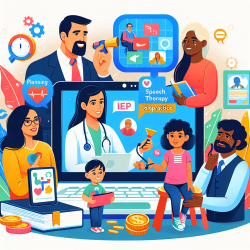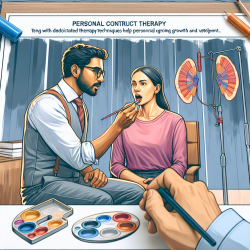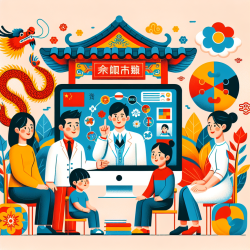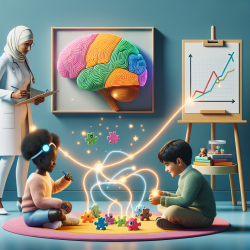Individualized Education Programs (IEPs) are a cornerstone of providing tailored education to students with special needs. These plans, meticulously crafted by a team of educators, parents, and specialists, are designed to ensure that each student has the support and resources they need to thrive in the educational setting. With the advent of speech therapy telepractice, the landscape of IEP planning and meetings is experiencing a joyous transformation, offering new opportunities for collaboration, accessibility, and efficiency.
At TinyEYE, we understand the critical role that speech therapy plays in helping students overcome communication barriers. Our mission is to bring innovative solutions to schools, ensuring that every child has access to the highest quality speech therapy services. As government health regulators, it is essential to recognize the potential of speech therapy telepractice in enhancing the IEP process, making it more inclusive and adaptable to the needs of today's diverse student population.
Advantages of Speech Therapy Telepractice in IEP Planning
- Accessibility: Telepractice breaks down geographical barriers, making it easier for students in remote or underserved areas to receive speech therapy services. This increased access is particularly beneficial during the IEP planning stages, where the involvement of specialized speech therapists can significantly influence the development of effective, individualized plans.
- Collaboration: Online platforms facilitate smoother communication and collaboration among IEP team members, including teachers, parents, therapists, and students. This enhanced collaboration ensures that everyone's voice is heard, leading to more comprehensive and effective IEPs.
- Flexibility: The virtual nature of telepractice offers greater scheduling flexibility for IEP meetings, allowing for more frequent updates and adjustments to the plan as needed. This flexibility ensures that the IEP remains relevant and responsive to the student's evolving needs.
- Efficiency: With speech therapy staffing challenges being a reality for many schools, telepractice provides a solution by connecting schools with qualified therapists regardless of location. This efficiency in staffing ensures that IEP goals related to speech and language development are met with expertise and without delay.
Implementing Speech Therapy Telepractice in IEP Meetings
To fully leverage the benefits of speech therapy telepractice in IEP planning and meetings, several strategies can be adopted:
- Ensure that all IEP team members are trained in using telepractice platforms, emphasizing the importance of security, privacy, and effective online communication.
- Utilize digital tools and resources to share documents, assessments, and progress reports in real-time, fostering a transparent and collaborative environment.
- Incorporate virtual observation sessions, where speech therapists can work with students online while IEP team members observe. This approach provides valuable insights into the student's needs and progress, informing more accurate and impactful IEP decisions.
- Engage parents and students in the telepractice process, providing them with the knowledge and tools to actively participate in IEP meetings and contribute to the development of the plan.
Conclusion
The integration of speech therapy telepractice into IEP planning and meetings represents a joyful and forward-thinking approach to special education. By embracing this technology, schools can overcome traditional barriers, ensuring that every student receives the personalized support they need to succeed. For government health regulators, recognizing and supporting the adoption of telepractice in educational settings is crucial for fostering an inclusive, accessible, and efficient approach to special education. Together, we can transform the IEP process, bringing joy and achievement to students, educators, and families alike.
At TinyEYE, we are committed to partnering with schools and government bodies to implement speech therapy telepractice solutions that enrich the educational experience for students with special needs. Let us embrace the future of education technology with optimism and ensure that every child has the opportunity to reach their full potential.










